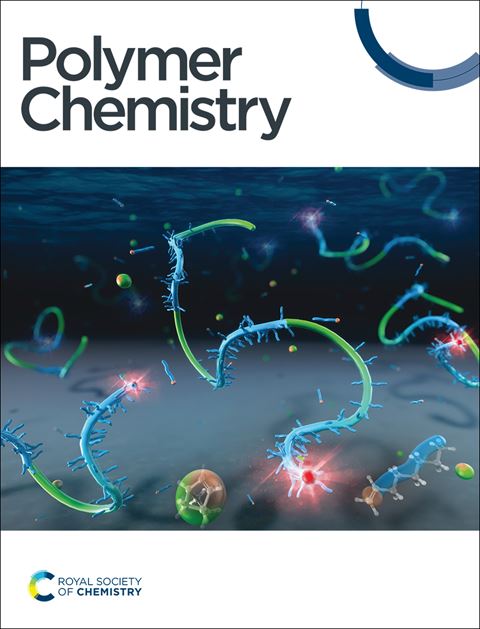基于动态共价键的聚合诱导自组装纳米材料
IF 4.1
2区 化学
Q2 POLYMER SCIENCE
引用次数: 0
摘要
聚合诱导自组装(PISA)已经成为一种多功能和强大的方法,用于原位生成具有不同形态和功能的聚合物纳米结构。目前,动态共价键(DCBs)以其可逆性和刺激响应性而闻名,为精确调节聚合物组合提供了一种复杂的工具。将DCBs加入到PISA中,有利于组件的分解、形态转变、表面修饰、药物控释、胶束内交联和胶束间交联,从而扩大了PISA组件在药物递送、靶向控释、分子识别、传感和可修饰胶束交联凝胶中的应用。PISA与dcb的结合为设计自适应和可调嵌段共聚物纳米物体系统提供了一种有前途的方法,为聚合物化学领域提供了新的见解和机会。本文讨论了动态共价键(包括二硫键、硼酸酯、亚胺和[2+2]环加成)在PISA框架内的整合,并为未来开发动态响应和多功能PISA纳米材料的研究提供了指导。本文章由计算机程序翻译,如有差异,请以英文原文为准。
Polymerization-induced self-assembly nanomaterials based on dynamic covalent bonds
Polymerization-induced self-assembly (PISA) has emerged as a versatile and powerful methodology for the in situ generation of polymeric nanostructures with diverse morphologies and functionalities. Currently, dynamic covalent bonds (DCBs), known for their reversible and stimulus-responsive nature, offer a sophisticated tool for the precise modulation of polymer assemblies. The incorporation of DCBs into PISA facilitates the disaggregation, morphological transition, surface modification, controlled drug release, intra- and inter-micellar crosslinking of assemblies, thereby expanding the applications of PISA assemblies in drug delivery, targeted controlled release, molecular recognition, sensing, and modifiable micelle-crosslinked gels. The combination of PISA with DCBs offers a promising approach for designing adaptive and tunable block copolymer nano-object systems, providing new insights and opportunities in the field of polymer chemistry. This review discusses the integration of dynamic covalent bonds, including disulfide, boronate ester, imine, and [2+2] cycloaddition, within the PISA framework and provides guidelines for future research on the development of dynamically responsive and multifunctional PISA nanomaterials.
求助全文
通过发布文献求助,成功后即可免费获取论文全文。
去求助
来源期刊

Polymer Chemistry
POLYMER SCIENCE-
CiteScore
8.60
自引率
8.70%
发文量
535
审稿时长
1.7 months
期刊介绍:
Polymer Chemistry welcomes submissions in all areas of polymer science that have a strong focus on macromolecular chemistry. Manuscripts may cover a broad range of fields, yet no direct application focus is required.
 求助内容:
求助内容: 应助结果提醒方式:
应助结果提醒方式:


